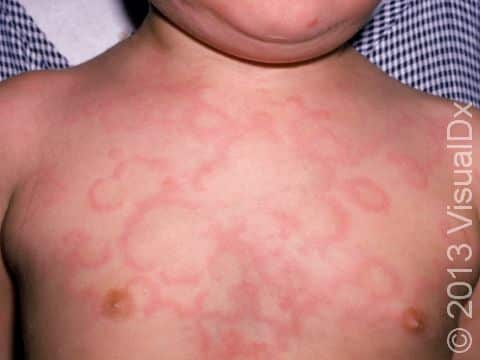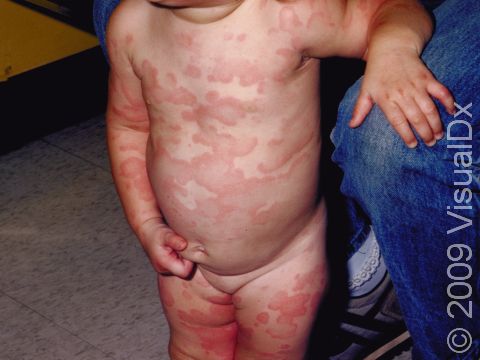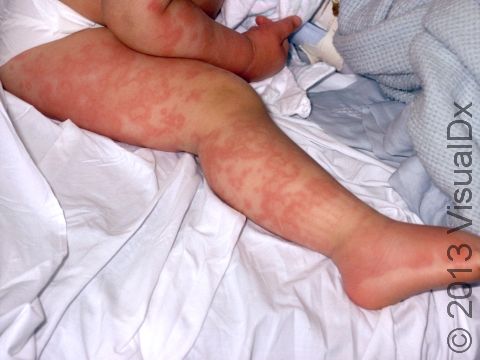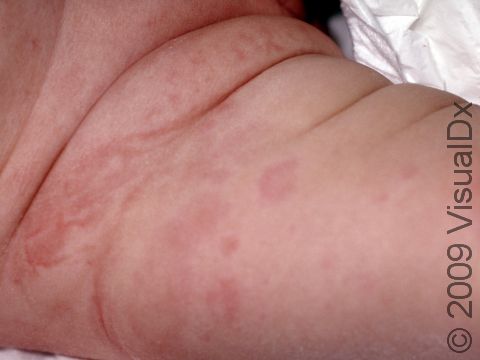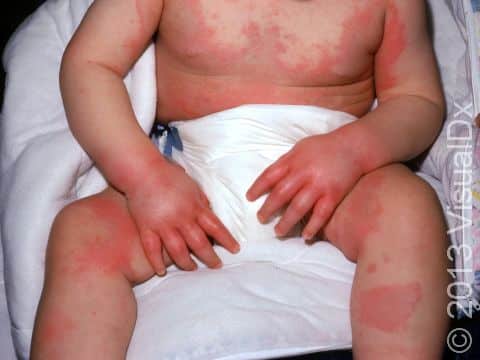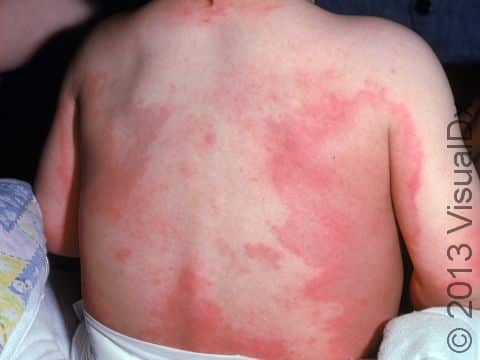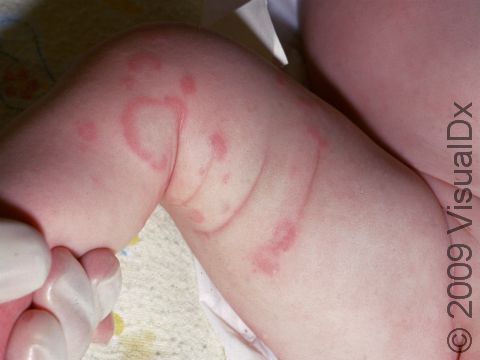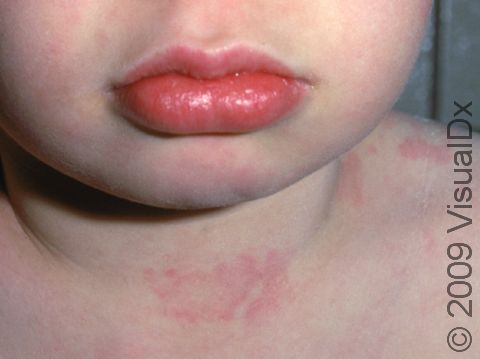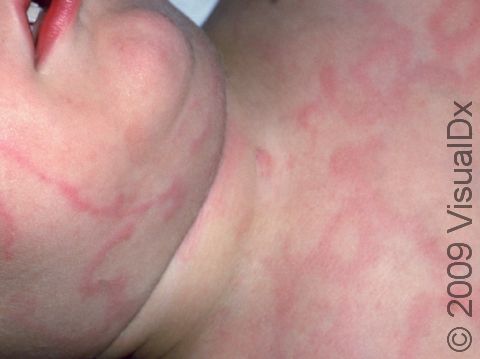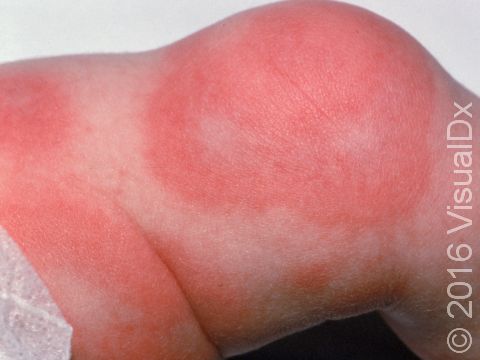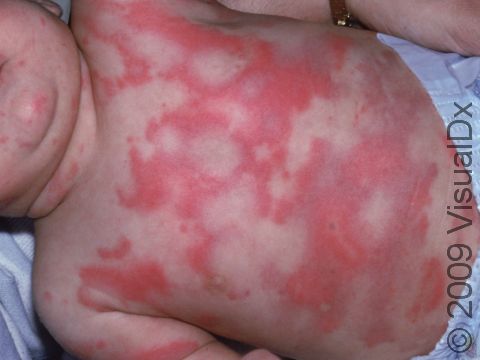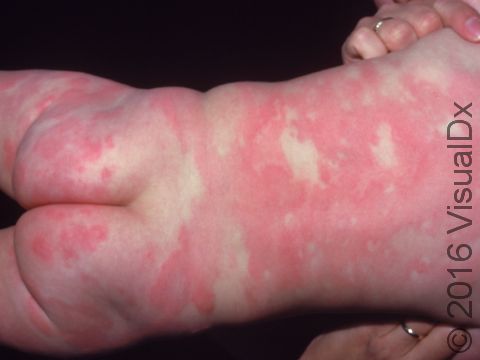Hives (Urticaria)
Hives (urticaria), also known as welts, is a common skin condition with itchy pink or red bumps (papules) that appear and disappear anywhere on the body. In darker skin colors, the redness may be harder to see, but the swollen skin bumps can be felt by the touch. An individual hive typically lasts a few hours before fading away, and new hives can appear as older areas disappear.
Although sometimes the exact cause of hives is unknown, the following is a list of possible triggers: foods such as peanuts, shellfish, and eggs; environmental allergies such as pollen, trees, and animal dander; and medications such as antibiotics, aspirin, and other painkillers. Individuals with a family or personal history of atopic conditions (asthma, hay fever, eczema) are more prone to developing hives.
Who's At Risk?
Hives appear in people of any age, race / ethnicity, and sex. Hives are very common; it is estimated that up to 20% of the population will develop hives at some point in their lives. Individuals with a family or personal history of atopic conditions (asthma, hay fever, eczema) are more prone to developing hives. Rarely, genetic conditions may predispose an individual to hives.
Signs & Symptoms
The most common locations for hives include the:
- Trunk of the body.
- Upper arms or upper legs.
However, hives can affect any skin surface.
Individual lesions of hives appear as well-defined pink or red swellings, which, in darker skin colors, may be easier to feel than see. The bumps range in size from 2 mm to over 30 cm. Some lesions may develop a lighter center. Hives usually appear in groups or batches.
Individual lesions of hives disappear within 24 hours, although a single episode may last much longer.
Dermographism is a type of hives that appears within a few minutes of scratching the skin. The rash usually appears in a straight line (linear) pattern.
Swelling of the eyes, mouth, hands, feet, or genitals can sometimes occur with hives. This swelling, called angioedema, usually goes away within 24 hours.
Hives are usually itchy, but they can also burn or sting.
Self-Care Guidelines
If your child is experiencing mild hives, you may try:
- Giving them a cool bath.
- Applying cool compresses.
In addition, try to discover and avoid any triggers of your child’s hives.
Treatments
After confirming that your child has hives, the medical professional will work with you to discover the possible cause. They will also take a detailed medical history and may do blood tests.
The most common medications for hives include:
- Non-sleep-causing (nonsedating) type-1 antihistamines such as fexofenadine (Allegra) for ages 6 months and older or desloratadine (Clarinex) for ages 6 months and older.
- Other antihistamine or anti-inflammatory medications.
In rare situations, the medical professional might prescribe a short course of oral corticosteroid pills.
Visit Urgency
If your child’s hives make it difficult to breathe or swallow, call 911.
In nonurgent situations, see your child’s medical professional if the hives do not improve with self-care or if they continue to appear for more than a day.
Before visiting your child’s medical professional, try to notice what might be triggering the hives and whether it improves or worsens with exposure to heat, cold, pressure, or vibration. Take a list of every medication (prescription and over the counter), supplement, and herbal remedy your child has taken recently. Also consider any recent illnesses your child has had because some illnesses (and their treatments) can trigger hives.
References
Bolognia J, Schaffer JV, Cerroni L. Dermatology. 4th ed. Philadelphia, PA: Elsevier; 2018.
James WD, Elston D, Treat JR, Rosenbach MA. Andrew’s Diseases of the Skin. 13th ed. Philadelphia, PA: Elsevier; 2019.
Kang S, Amagai M, Bruckner AL, et al. Fitzpatrick’s Dermatology. 9th ed. New York, NY: McGraw-Hill Education; 2019.
Paller A, Mancini A. Paller and Mancini: Hurwitz Clinical Pediatric Dermatology. 6th ed. St. Louis, MO: Elsevier; 2022.
Last modified on February 28th, 2023 at 9:09 pm

Not sure what to look for?
Try our new Rash and Skin Condition Finder
